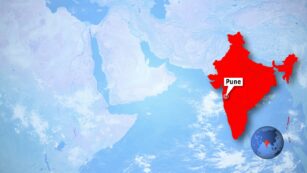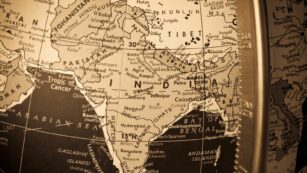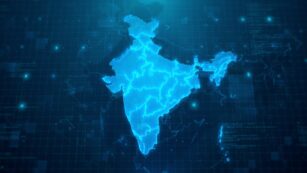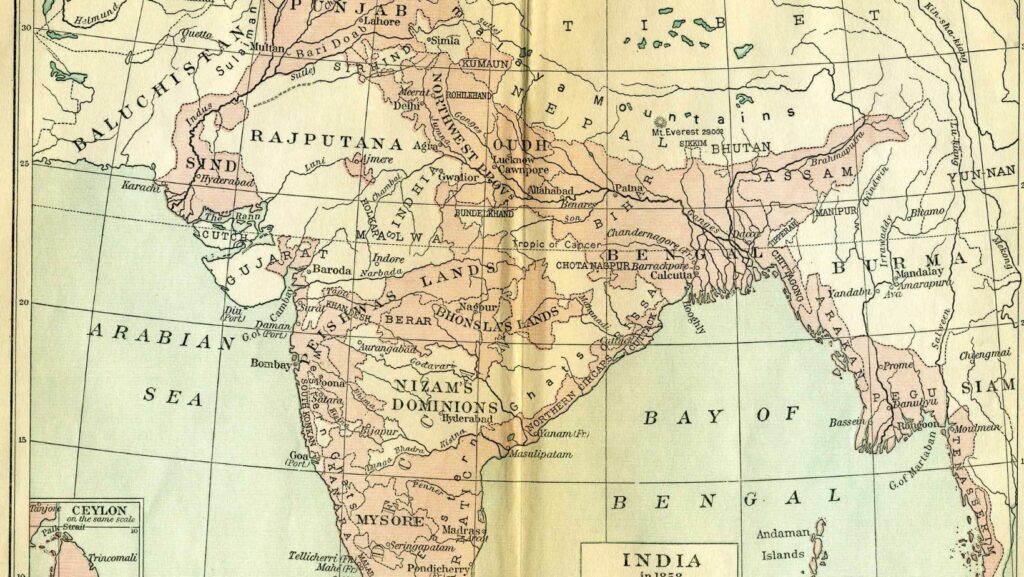India, a land of rich cultural diversity and geographical global marvels, is often explored through its distinctive map outline. This article delves into the intriguing aspects of the outline map of India, a geographical representation that’s more than just lines and borders.
Join us as we guide you on a journey through India’s geographical contour, appreciating its unique shape while gaining insights into what these boundaries encompass. This isn’t just about the geography; it’s about the classic stories that the lines of the map tell, and the history they hold within.
Outline:ehlvj53avae= India Map
 The outline map of India hasn’t remained static. Over time, it underwent significant transformation, keeping pace with regional changes, bifurcations of states, and political shifts. Initially, in the early 1940s, the map contained the entire British Indian Empire, including modern Pakistan and Bangladesh.
The outline map of India hasn’t remained static. Over time, it underwent significant transformation, keeping pace with regional changes, bifurcations of states, and political shifts. Initially, in the early 1940s, the map contained the entire British Indian Empire, including modern Pakistan and Bangladesh.
Post-independence in 1947, the formation of new states reshaped the geography of the map over time. Telangana, for instance, formally became India’s 29th state in 2014, modifying the Indian map once more. Thus, it’s evident that the evolution of the outline map of India mirrors the nation’s history and shapes to the evolving political and social landscape.
However, the transformation isn’t just limited to the visible boundaries. Over time, detailed portrayals of physical features such as rivers, mountains, and plateaus have magnified, accentuating the utility of the map as a tool for teaching geography.
| Year | Transformation |
|---|---|
| 1940s | Map included British Indian Empire |
| 1947 | New independent states formed |
| 2014 | Telangana, the 29th state introduced |
Uses of the Outline India Map
 The Outline India Map offers practical applications, primarily in the educational, geographical, and administrative sectors. In the educational domain, it contributes to geography lessons, assisting students to recognize states, union territories, and major geographical features. Furthermore, researchers utilize the map in studies relating to geology and topography, strengthening their understanding of the nation’s terrain.
The Outline India Map offers practical applications, primarily in the educational, geographical, and administrative sectors. In the educational domain, it contributes to geography lessons, assisting students to recognize states, union territories, and major geographical features. Furthermore, researchers utilize the map in studies relating to geology and topography, strengthening their understanding of the nation’s terrain.
Administratively, the Indian government often resorts to the outline map for strategic planning and development. It assists in determining logistical routes, border management, and infrastructural development, ensuring overall smoother operations. Not restricted to these domains, the utility of an Outline India Map extends its scope, underlying its deep-seated role in India’s diverse sectors.
Key Features of the Outline India Map

The Outline India Map exhibits distinct attributes that illustrate India’s complex terrain and illustrate its territorial boundaries. Firstly, it accurately depicts India’s physical features, portraying large mountain ranges like the Himalayas, vast rivers like the Ganges, and expansive plains like the Gangetic plains. Secondly, it indicates the 28 states and 8 Union territories, marked by definitive borders, fostering an understanding of India’s political landscape. Thirdly, the map features significant cities, serving as a communication aid in geographical learning and navigation.
In addition, the Outline India Map demonstrates critical highways, railways, and air networks, vital for strategic and logistics planning. It also shows India’s coastal features, shedding light on marine biodiversity, ports, and coastline management. Lastly, the map outlines India’s numerous National Parks and Wildlife sanctuaries, guiding conservation efforts.
Each feature serves a purpose; every mountain, river, state, or infrastructure represents distinct facts about India’s geography or administration. This understanding is essential in various areas like education, research, planning, and conservation. The Outline India Map, thus, emerges as more than a visual aid; it’s a tool depicting India’s geographical richness, historical journey, and future potential.
Digital Advancements in Mapping
As the outline map of India continues to evolve, it’s becoming more than just a visual representation. It’s a testament to India’s historical and political transformations, a valuable educational tool, and a practical aid for research and strategic planning. The map’s dynamic nature, reflecting changes from the early 1940s to recent times, showcases India’s resilience and adaptability. Its detailed depiction of physical features, political landscapes, and conservation areas offers a comprehensive understanding of the country’s geography and potential. Furthermore, with the advent of digital technology, the map’s relevance and accessibility have increased, enabling a broader audience to explore and understand India’s diverse terrain. It’s not just a map; it’s a vibrant, evolving story of India’s past, present, and future.

